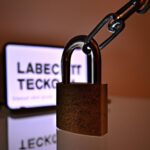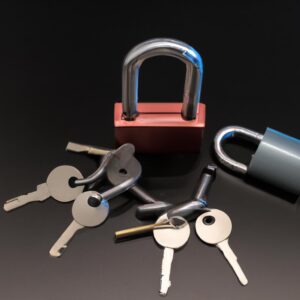Introduction to the Benefits of Multi-Factor Authentication
Multi-factor authentication (MFA) is a security measure that requires users to provide multiple forms of authentication when attempting to access an account or website. MFA can include a variety of measures such as passwords, biometric scans, and one-time codes, which help to ensure the identity of users and protect accounts from unwanted access. It’s important to understand the benefits of MFA, as it is increasingly becoming an essential part of online security.
As cyber threats become more sophisticated, and data breaches become commonplace, it is more important than ever to make sure that accounts are secure. Multi-factor authentication can provide an added layer of security for any account or system, helping to protect against malicious actors and unauthorized access. In this guide, we will take a closer look at the various benefits of multi-factor authentication, as well as how to get started with implementing it.
What is Multi-factor Authentication?
Multi-factor authentication (MFA) is a security system that requires users to provide two or more verification factors during the login process. This is done in order to verify the user’s identity and protect against unauthorized access to accounts. The factors can include something you know, such as a password or PIN, something you have, such as a phone or security key, or something you are, such as your fingerprint or voice.
Multi-factor authentication is increasingly being used by organizations and individuals due to its convenience and security benefits. It is becoming standard practice for online banking, social media, ecommerce, and other accounts, given the need to protect sensitive information from malicious actors. As well as being secure, multi-factor authentication also offers a much more user-friendly experience than traditional methods of security verification.
The most common types of multi-factor authentication include:
- Knowledge Factors: These are the most commonly used verification factors and involve something the user knows, such as a password, PIN, security question, or pattern recognition. Knowledge factors are usually agreed upon prior to setting up MFA.
- Possession Factors: Possession factors involve tangible items that the user has in their possession, such as a smartphone, USB security key, fob, or physical card.
- Inherence Factors: Inherence factors are used to confirm the identity of the user through biometrics, such as fingerprints, retinal scans, facial recognition, voice recognition, and hand geometry.
Increased Security
Multi-factor authentication provides an additional layer of security for online accounts. While single-factor authentication relies on just one factor (such as a username and password combination), multi-factor authentication requires two or more separate pieces of evidence to gain access. This form of authentication can be used to verify someone’s identity before they can log in to an account, purchase items online, transfer money, or even access sensitive documents.
Multi-factor authentication adds an extra level of protection to accounts because it requires users to enter multiple pieces of information such as passwords, pins, one-time codes, and biometrics. By validating a user’s identity with multiple components, this type of authentication makes it more difficult for a hacker to access an account. It also adds an extra layer of security that is often missing in single-factor authentication.
The use of multi-factor authentication can also reduce the risk of account takeovers. By verifying a user’s identity with multiple components, any attempts to gain access to an account through compromised credentials will be blocked before access is granted. This helps protect sensitive information and data from being accessed without authorization.
Finally, multi-factor authentication can help organizations comply with security regulations. Regulations such as the General Data Protection Regulation (GDPR) require businesses to meet certain security standards when it comes to protecting customer data. By implementing multi-factor authentication, organizations can ensure that they are meeting the required security standards.
Cost Effectiveness
Multi-factor authentication is an innovative and cost-effective way to increase account security. As the name suggests, it involves multiple forms of authentication such as passwords, personal identification numbers, biometric scans, and even physical tokens. These multiple layers of protection make it more difficult for unauthorized individuals to access accounts, which decreases the chances of data breaches.
The use of multi-factor authentication also reduces operational costs associated with data breaches. Organizations that leverage this authentication protocol save money in the long run by reducing recovery costs, legal fees, and damage control.
Utilizing multi-factor authentication can also help organizations reduce their personnel costs. By incorporating this protocol into their security measures, organizations can limit the amount of time their staff spend dealing with security issues.
The technology used in multi-factor authentication is also cost-effective. Physical tokens are relatively inexpensive and can often be customized to suit specific needs. In addition, some organizations opt for biometric scans which are increasingly affordable, and provide a more secure form of authentication.
Businesses that rely on e-commerce for revenue need reliable security measures. Multi-factor authentication provides an effective solution for protecting sensitive information while ensuring smooth operation. With the right implementation, businesses can maximize the cost savings associated with multi-factor authentication.
Improved User Experience
Using multi-factor authentication makes it easier for users to manage their accounts; it eliminates the need for them to commit long, complicated passwords to memory, or connect via physical tokens. Multi-factor authentication solutions offer users an added layer of security as well as convenience, providing them with quicker and easier access to their accounts.
Unlike traditional security measures, multi-factor authentication means that users are only required to enter a username and password or passcode once. After that, depending on which type of authentication is being used, they can gain access to their accounts without any further input. This means that users don’t have to worry about remembering complex passwords or dealing with other authentication methods again.
In addition, many multi-factor authentication solutions offer users additional features such as two-factor authentication, which can be more secure than single-factor authentication. Two-factor authentication requires users to enter a username and password or passcode, as well as another form of verification such as a fingerprint scan or facial recognition, before gaining access to their account. This ensures that only authorized users can access the account.
Multi-factor authentication also offers users additional control over their accounts. Most multi-factor authentication solutions allow users to set up alerts or notifications when someone attempts to access their account from an unrecognized device or location. This provides users with an extra layer of security and peace of mind.
Overall, multi-factor authentication offers users a much more convenient and secure way of managing their accounts than traditional security measures. It helps users to enjoy the benefits of increased protection without compromising user experience.
Uninterrupted Use
Multi-factor authentication can be an invaluable tool to protect against unwanted access and ensure there is a continuity of service. It helps protect accounts from being hacked, stolen, or otherwise compromised by making logging in more secure by requiring multiple factors for secure access. By providing an additional layer of security, the risk of unauthorized access is significantly reduced.
With multi-factor authentication in place, users have greater peace of mind that their information is safe and secure. The ability to require multiple authentication factors ensures that only authorized individuals can access accounts, reducing the risk of any unwanted access or user error. This also reduces the risk of malicious attacks, as attackers are unable to gain access to accounts with a single factor.
Multi-factor authentication also provides for uninterrupted use, as it prevents accounts from being locked out due to incorrect login attempts. By having multiple authentication steps, users can be consistently assured that their accounts remain secure and protected from outside threats.
In addition, multi-factor authentication can help ensure continuity of service even during times of downtime, such as system failures or internet outages. By having multiple authentication steps, users can still be able to log in and access their accounts, even when the primary authentication factor is unavailable.
Improved Compliance
Multi-factor authentication can greatly aid organizations in their compliance with complex regulations, as it provides an additional layer of security and assurance. This is especially true for companies that must adhere to the Payment Card Industry Data Security Standard (PCI DSS), which requires them to implement multi-factor authentication for any customer data they collect. In addition, using multi-factor authentication can help ensure the security of customer information such as account numbers and passwords.
Multi-factor authentication can also be used to meet the requirements of other compliance standards including the Health Insurance Portability and Accountability Act (HIPAA), the Sarbanes-Oxley Act (SOX), and the Gramm-Leach-Bliley Act (GLBA). By providing an extra layer of security, multi-factor authentication can help organizations adhere to these standards more easily and effectively.
Finally, multi-factor authentication can also improve an organization’s overall compliance posture. By making it more difficult for unauthorized users to gain access to sensitive data, a company can demonstrate that it takes data security seriously and is willing to go above and beyond to protect its customers. This can be a powerful statement of commitment to both customers and regulators.
Easier Maintenance
Multi-factor authentication makes security maintenance much easier. It lets you update your security protocols quickly and effortlessly, without needing to change every single user’s password. Plus, because MFA is based on a choice of multiple authentication methods, you can also adjust the level of security depending on the level of protection needed.
Using MFA also means you can monitor access to data from one central location, making it much simpler to identify any potential threats. This makes security maintenance a much easier task, as it reduces the need for manual review or analysis.
Differences Between Multi-Factor and Single-Factor Authentication
When it comes to protecting your accounts and data, multi-factor authentication provides an extra level of security. Multi-factor authentication (MFA) requires two or more verification methods in order to access an account.
Unlike single-factor authentication, which relies on only one verification method, MFA requires users to provide multiple pieces of identifying information in order to log in. By verifying multiple factors, MFA helps reduce the risk of unauthorized access.
In contrast to single-factor authentication, MFA ensures that two or more independent authentication factors are in place before granting access to someone’s account. These authentication factors could include something a user knows, such as a password or PIN; something a user has, such as a bank card or key fob; or something a user is, such as a biometric identifier.
MFA is also more resilient against attacks like phishing, social engineering, and malware, since hackers would need to compromise multiple factors, rather than just one, in order to gain access.
The benefits of MFA extend beyond improved security and reliability. Since it is more secure than other authentication methods, it is likely to be cheaper and easier to maintain. Furthermore, it can help organizations comply with increasingly complex regulatory requirements.
User experience can also be improved by implementing MFA. With fewer passwords to memorize, users have an easier time remembering their account credentials. Additionally, MFA ensures uninterrupted use, since it prevents any unauthorised access.
Implementing Multi-Factor Authentication
Multi-factor authentication (MFA) is an essential tool for keeping data and accounts secure. Setting up a multi-factor authentication system is a straightforward process, though it may not be obvious at first. This section will outline the steps to take in order to ensure that your organization’s account security is up to par.
First, you need to identify which users will be using MFA. Different users may have different levels of access, and MFA should be implemented accordingly. Additionally, all users should understand why they need MFA and how it can benefit them and the company.
Next, decide which authentication methods you want to use. Common methods include text-message or email verification codes, one-time passwords, authentication apps, and biometrics such as fingerprints or voice recognition. It’s best to keep a wide variety of options so that users can pick the one that works best for them.
Once the authentication methods are selected, begin integrating them into the user login flow. This process varies depending on the type of system you are using, but typically involves adding specific code or functions to the login procedure. You should also make sure the authentication systems are compatible with your existing systems.
Once the authentication system is set up, it’s time to test it. Have different users sign into the system and check that the authentication works correctly. Be sure to document any errors or issues that may arise during this process.
Finally, you need to regularly review and update your authentication system. Increasingly sophisticated security threats require that your system is always up to date. If you find that current processes aren’t working, you may need to consider implementing more advanced security measures.
By following these steps, you can ensure that your multi-factor authentication system is effectively protecting your organization’s data. Building and maintaining an effective MFA system can be difficult, but taking the time to do it right will pay off in increased security and peace of mind.
Common Pitfalls to Consider
When implementing multi-factor authentication, it is important to be aware of some common mistakes. Many organizations are so focused on the benefits of using multi-factor authentication that they skip essential steps in the process. This can lead to issues such as failed authentication attempts, blocked accounts, and restricted access.
In addition, many organizations fail to save passwords securely or give users easy access to their accounts. If user credentials are exposed, this can potentially lead to a breach of security. It is important to ensure that all passwords are stored in a secure, encrypted place and that users have appropriate access privileges.
Finally, it is important not to forget about existing protocols and security measures when introducing multi-factor authentication. Organizations should be sure to revisit single-factor authentication protocols to ensure they are up to date, and adjust any necessary settings to accommodate the new authentication method.
Conclusion
In conclusion, it is clear that multi-factor authentication offers many benefits to users. It provides a secure platform to protect accounts and data while being cost-effective and more user-friendly than traditional security protocols. Multi-factor authentication also ensures organizations are compliant with the latest regulations and can easily update their security systems when necessary. As a result of its advantages, it is important for companies and individuals to understand and implement multi-factor authentication for improved security and safety.
comments: 0











